Imagine the desert, a vast and unforgiving land where life struggles to survive under the relentless sun. But there’s more to the desert than meets the eye. Beneath the scorching sands exists a hidden world, a world of unseen heroes that play a vital role in shaping the very essence of this unforgiving landscape. This article delves into the remarkable story of decomposers, the unsung heroes of the desert, and their extraordinary contributions to the survival of this awe-inspiring environment.
Decomposers in the Desert: The Unsung Heroes of a Harsh Land
Picture a desert: scorching sun, parched earth, and a sense of untamed wilderness. It might seem like a desolate place, but even here, life finds a way – and it’s all thanks to the behind-the-scenes work of some incredible creatures: decomposers.
Deserts aren’t really about the absence of life, but rather the resilience of life in the face of challenges. Every scorpion, every cactus, every gust of wind plays a role. And when those lives come to an end, that’s where our unsung heroes step in.
We’re talking about an army of tiny recyclers, munching away on dead plants and animals. You might not think much of a decaying cactus or a pile of dried-up dung, but to a decomposer, that’s a feast!
Bacteria and fungi act as the first responders, like nature’s microscopic chefs, breaking down tough organic matter into smaller, more digestible pieces. Then come the bigger players—insects, millipedes, even the occasional beetle. They feast on this pre-digested buffet, enriching the soil with their waste.
This entire process keeps the desert alive and kicking! By breaking down the dead stuff, decomposers release essential nutrients back into the soil. It’s like a natural fertilizer, giving desert plants the fuel they need to grow and thrive. And since those plants support a whole chain of other desert dwellers, from insects to reptiles to mammals, it becomes clear how important these little decomposers really are.
Desert decomposers are masters of adaptation. They’ve evolved to handle the intense heat, the lack of water, and the limited resources. Some, like certain beetles, get their moisture from the food they consume. Others have developed special enzymes that help them break down tough materials with incredible efficiency.
Scientists are still unraveling all the secrets of these fascinating creatures. There’s so much we don’t know about how they’ve adapted to such extreme conditions. But one thing’s for sure: decomposers are the unsung heroes of the desert, the invisible force that keeps this unique ecosystem alive and flourishing. They might not be the most glamorous creatures, but they’re a vital reminder that life, in all its forms, deserves our respect and admiration.
What are Five Decomposers in the Desert?
You won’t see parades in their honor, but deserts have these little heroes called decomposers, working tirelessly behind the scenes. They might not be flashy, but without them, the desert would be a very different place. Imagine a pile of dead plants just sitting there, never breaking down. Not a pretty picture!
Deserts are known for being dry, but that doesn’t mean there isn’t life… it just means life there has to be tough! Decomposers are the ultimate recyclers. They take all that dead stuff – fallen leaves, animal carcasses, you name it – and break it down into simpler materials. This process is like magic, turning waste into valuable nutrients that plants use to grow. It’s a whole cycle of life and death happening right beneath our feet!
So, who are these mysterious desert decomposers? Let’s meet a few:
- Bacteria: Think of these as the invisible workforce. They’re everywhere in the soil, and they’re really good at their job. They may be microscopic, but they are mighty!
- Fungi: You know those mushrooms you might see after the rain? They’re just the tip of the iceberg! Fungi have these vast underground networks that spread through the soil, kind of like roots. They’re experts at breaking down tough stuff like wood.
- Insects: Not all insects are out to get you! Some are actually nature’s cleanup crew. Beetles, ants, and their buddies munch on dead plants and animals, making sure nothing goes to waste.
- Worms: They might not be the prettiest creatures, but worms are crucial for healthy soil. They literally eat dirt, digest the organic matter, and their waste (called castings) is like super-fertilizer.
- Millipedes: Ever seen these guys with all those legs? They’re like walking composters, munching on decaying leaves and helping to break them down into smaller pieces.
What’s really cool is that scientists are still learning about all the different types of decomposers in the desert and how they work together. It’s a delicate balance, and even small changes can have big consequences. So next time you’re in the desert, take a moment to appreciate the little things – they’re doing a big job!
What are 10 Examples of Decomposers?
Let’s dive deeper into this world of decomposers. We’ve already talked about how crucial they are, these often-overlooked creatures that break down dead stuff and keep the cycle of life going.
Instead of one type of decomposer dominating, deserts are home to a whole team of them, each with their own specialties. It’s like a microscopic city working together!
Think of bacteria, those tiny powerhouses we can’t even see. They kickstart the whole decomposition process. They release special chemicals called enzymes that break down the tough stuff in dead plants and animals. Then come the fungi, spreading their thread-like networks, called hyphae, through the decaying matter. These guys are like the ultimate recyclers, pulling out all the useful nutrients.
And let’s not forget the bigger players! Insects, worms, and even some larger animals like scavengers – they all contribute to the breakdown. Insects and worms, for instance, munch on the smaller bits, making it even easier for bacteria and fungi to do their thing.
Here’s a closer look at some of the amazing decomposers working hard in the desert:
| Decomposer | What they do |
|---|---|
| Bacteria | The first on the scene, breaking down complex materials with their enzymes |
| Fungi | Spread through decaying matter, extracting nutrients with their hyphae |
| Insects (like beetles, ants) | Break down organic matter into smaller pieces, speeding up decomposition |
| Worms | Help mix the soil and break down organic matter, improving soil structure |
| Millipedes | Love munching on dead plants and their decaying parts |
| Beetles (some species) | Can handle both plant and animal matter, true all-rounders! |
| Crustaceans (in desert water sources) | Important for breaking down organic matter in the rare but essential water bodies |
| Slugs and Snails | Feed on decaying plant material and sometimes even fungi! |
| Protozoa | These microscopic creatures eat bacteria, keeping their populations in check and releasing nutrients back into the system |
Our understanding of desert decomposers is still growing. Research suggests that there might be many more types of decomposers out there that we haven’t even discovered yet! Each desert likely has its own unique set of decomposers, perfectly adapted to that particular environment. This is a field where new discoveries are always being made.
So, the next time you’re thinking about the desert, don’t just picture the cacti and the sand. Imagine the hidden world beneath your feet, where an army of decomposers is hard at work, making life in the desert possible!
What are Decomposers in the Sahara Desert?
The Sahara Desert is known for its harsh conditions. But even in this extreme environment, nature finds a way. While we often picture towering sand dunes and scorching sun, there’s a hidden world beneath the surface, a world where “decomposers” work tirelessly.
What are decomposers, you ask? Well, they’re like nature’s recyclers.
Plants and animals live their lives, and eventually, they die. In the Sahara, this “leftover” organic material would just pile up if it weren’t for decomposers. These incredible organisms, mainly bacteria and fungi, have the remarkable ability to break down this dead stuff. They transform it into simpler substances that go back into the soil, providing essential nutrients for the few but hardy plants that can survive there.
It’s not just bacteria and fungi, though. The Sahara has some pretty amazing insects like beetles and ants that lend a helping hand (or leg, in this case). They break down smaller pieces. And then there are the bigger guys like earthworms and millipedes – they’re like the ultimate mixers, churning and aerating the soil so the whole decomposition process can happen more efficiently.
How do these decomposers manage in such a harsh place? Well, they’ve learned to adapt over time. Some desert beetles, for example, have developed clever ways to conserve water, which is like gold in the desert. Others can handle the intense heat. Bacteria and fungi have their own tricks – they can essentially go into hibernation mode by forming protective spores. These spores are like tiny survival pods that let them wait until there’s enough moisture to come back to life.
These decomposers, though often unseen, are essential to the Sahara’s survival. They’re the unsung heroes, keeping the cycle of life going in this incredible, albeit challenging, environment. By breaking down organic matter, they ensure that nutrients are available for other organisms, creating a delicate balance that helps sustain life in this extraordinary ecosystem.
What are 5 Decomposers in the Savanna?
Decomposers are like the ultimate recyclers! They’re the ones who take all that dead stuff – plants, animals, you name it – and break it down into tiny pieces. This might not sound glamorous, but it’s super important. Without decomposers, the savanna would be a messy, nutrient-depleted wasteland. Let’s meet some of these hard-working heroes:
1. Bacteria: The Tiny Titans
You can’t see them without a microscope, but bacteria are EVERYWHERE, and they work hard! These microscopic powerhouses churn out special chemicals called enzymes that break down dead stuff into simpler bits. Plants can then slurp up these bits as a nutritious snack.
2. Fungi: The Master Recyclers
Remember that tough, fibrous stuff that makes up plant cell walls? It’s called cellulose, and fungi just love it! They’ve got their own set of enzymes that turn cellulose into a feast, returning essential nutrients back to the soil. Some fungi even team up with plants, forming symbiotic relationships. The fungi help plants access even more nutrients, making the savanna a greener, more vibrant place.
3. Termites: The Wood-Working Wonders
Termites get a bad rap for munching on our houses, but they’re actually essential for a healthy savanna. They’ve got a taste for wood – and a gut full of microorganisms that helps them digest it! By breaking down dead trees and branches, they free up nutrients and help keep the savanna floor clear for new growth. Plus, all those tunnels they dig act like little air pockets, letting the soil breathe.
4. Scavengers: The Cleanup Crew
Dead animals aren’t exactly pretty. But luckily, the savanna has a dedicated clean-up crew: scavengers! From majestic vultures soaring overhead to cunning hyenas and jackals, these creatures may not be winning any popularity contests, but they play a vital role. By making a meal of the deceased, they prevent the spread of disease and keep the ecosystem in balance.
5. Dung Beetles: The Unsung Heroes
Last but certainly not least, we have the humble dung beetle. Yes, they love poop! And while that might seem a little gross, these little guys are doing the savanna a huge favor. They roll up dung into little balls, burying them in the ground. This not only fertilizes the soil but also helps to disperse seeds, leading to even more plant growth. Talk about turning waste into wealth!
Exploring the Uncertainties
Our understanding of decomposers is constantly evolving. There’s still so much we don’t know about these fascinating creatures and how they interact with the savanna ecosystem. For example, scientists are only just beginning to uncover the vast diversity of bacteria and fungi in the soil, and their specific roles in decomposition. There’s also ongoing research into how climate change might impact decomposer populations, which could have ripple effects throughout the entire food web. So while we’ve learned a lot, there’s always more to discover in the fascinating world of decomposers!
One of the critical roles in food webs is played by decomposers, the organisms that break down dead organisms. Decomposers play a vital role in the cycling of nutrients back into the ecosystem. The food web for the desert incorporates decomposers to show the relationships between organisms and their food sources. The desert producers such as cacti and shrubs are eaten by animals, such as rodents and rabbits. These animals are then eaten by predators, such as coyotes and owls. The remains of all of these organisms are eventually broken down by decomposers, which release nutrients back into the soil.
- Sept 31 Myth: Unveiling Calendar Secrets - March 18, 2025
- How Long & Till December 18, 2025: Accurate Countdown Guide - March 18, 2025
- Discover Japanese Artists: A Complete History - March 18, 2025
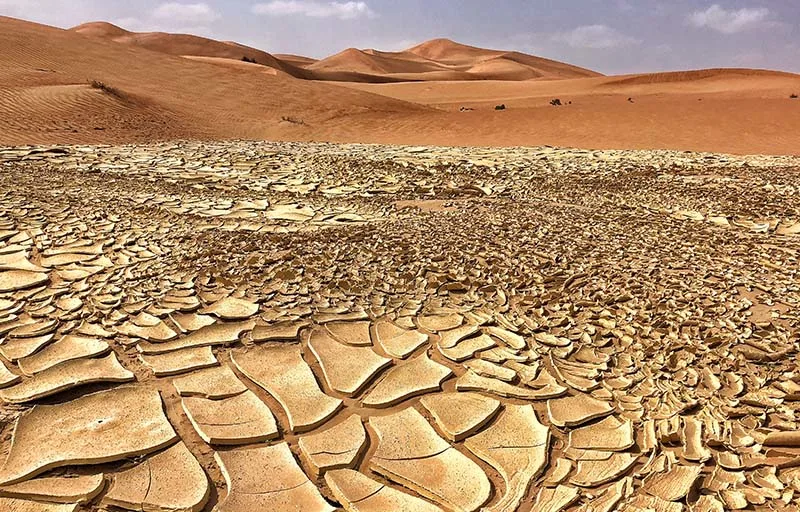
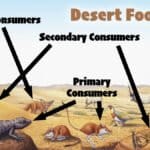
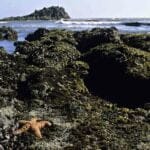
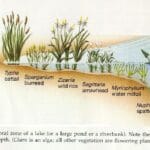


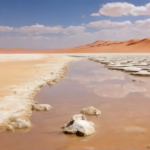










2 thoughts on “Unseen Heroes of the Desert: Unveiling the Vital Role of Decomposers”
Comments are closed.